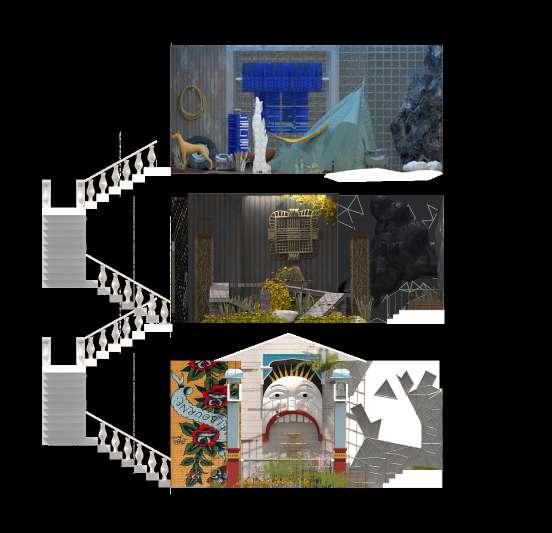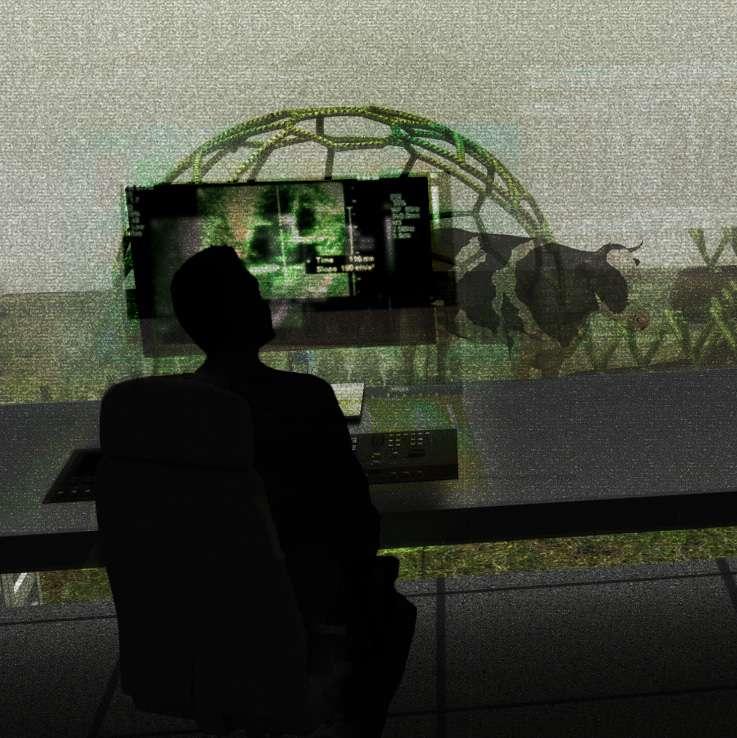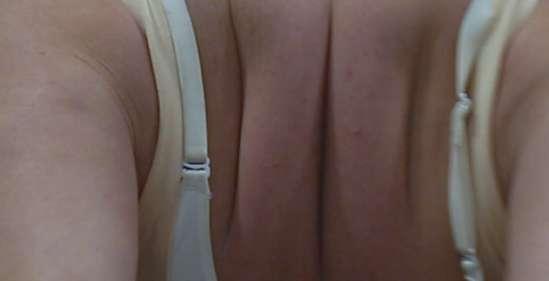

Zihan Zhou
Master of Interior Design
Speculative design & Future Practitioner
Narrator & Film making
Content
01_Amnesia Museum
Speculative Project & Architecture Interior
Fiction & writing & Research London
02_In-vitro Lab
Speculative Project & Factory Interior
Narrative Space & Research
Sheung Shui, Hong Kong
03_Wave Woods
Acoustic furniture & Commercial
Mycelium Biodesign Melbourne, Collingwood Showroom
04_Discomfort
Performative Infrastructure
Installation & Performance London, Royal College of Art

01 Amnesia Museum
Location London, United Kingdom
Feburary-Present 2024
Individual work
Supervisor: Gaetano Drago
‘City of Amnesia’ speculates on a future where monuments are demolished/reassembled to redefine their significance. By exploring monuments’ qualities absent from nowadays, it proposes to re-built London based on individuals’ history rather than collective’s; memory rather than truth. The Amnesia Museum features seasonal showrooms that recount the personal histories of inhabitants through the narratives of two fictional characters, Giovanni Rossi and Jane Miller. The design unlocks their memories by incorporating a serise of ‘vernacular’ and ‘personal’ spatial artefacts, As the narrative delves deeper into their memories, the artifacts will exhibit varying degrees of ‘Capriccio’.



https://vimeo.com/988179285
https://vimeo.com/988179285
https://vimeo.com/988179285

Amnesia Museum
Individual Showroom
Each and every one of us has our own particular version of the city, a selection of relevant moments, an aggregate of specific buildings, street corners, someone has his own conception of a city and in the process of attempting to capture its contours, forms, content and substance he in fact invents a new town entirely, a delimited and defined version.
‘Amnesia Museum’ form in such way its immense bulk slowly accumulated with its endless rooms. As a visitor, you start building your own lofty version of the city... Over times, every façade is an evocation of a city as it would be imagined by one period, or one institution, or one church, or one group of people, or even one person.
The endless rooms called ‘Individual Showroom’ is immense palace comprised every detail you wish to extract from his memories of those past days, along with embellishments he had added himself—refinements to shapes, a place you can wander and get inspirations.













JANE MILLER SHOWROOM



https://vimeo.com/988179009
https://vimeo.com/988179009
https://vimeo.com/988179009

https://vimeo.com/988179009

The following showrooms are curated based on their memories;
They were asked the question: ‘How do you want to be remembered?’
https://vimeo.com/988179009
https://vimeo.com/988179009

https://vimeo.com/988179009 and Jane’s showrooms tour memory:
https://vimeo.com/988179009


02 In-vitro Lab
Location Sheungshui, Hong Kong, China
July-October 2022
Individual work
Supervisor: Gyungju Chyon
We can see the our industry are looking ahead to the “future of food”. technological advance, systematic euality and care for climate. But sometimes the more we are told that technological solutions will fix the challenges of the complex food system, the more fragile we we may make it. The problem is deeper than tht- it is culutral, social and economic.
The project speculates the impact of in-vitro meat on cows in the near future. In-vitro meat technology offers the world a different way of producing meat. What if land farmingis replaced by lab-grown meat in the future?
In-vitro Lab is an enclosed space to garantee the continued FBS (Foetal Bovine Serum) harvesting from the cows, the critical ingredient for lab0grown meat production. The indoor farm is designed to increase the reproduction rate of the cows. It also accommodates cows’ mental health using sythetic hormones. It minimises their fear and pain, thus providing the highest quality ingredients for in-vitro meat manufacture.

IN-VITRO MEAT
The excessive consumption of meat, such as cow farming poultry industry, is environmentally unsustainable and keeps the exploit on animal welare. Yet, it may be impossible to stop consuming meat as it is deeply embedded in culinary culture.
In-vitro meat offers a different way of meat consumption which aims to eliminate the conflict. However, FBS (Foetal Bovine Serum) is the escapable ingredient of in-vitro meat comsumption. It is made by extracting the blood from 3 months cow fetus




IN-VITRO LABT
Spatial Plan & strategyT
In-vitro lab is an enclosed space to guarantee the continued FBS harvesting from the cows. The indoor farm is designed to increase the reproduction rate of the cows. The synthetic plant accommodates cows’ mental health using synthetic ‘relax’ hormones, the lights with blue hue(Purkinje effect) in the harvestroom pacify the cows during the cesarean process. They minimizes their fear and pain, thus providing the highest quality ingredients for in-vitro meat manufacture.

REPRODUCTION


FETUS HARVESTING






03 Wave Woods
Location Melbourne, Australia
March-June 2022
Group work
Supervisor: Gyungju Chyon

Wave woods is an acoustic furniture made from mycelium.The work is collaborated with KFive, a melbourne based firm. It was inspired by natural elements such as branches of corals and tree trunks. Their textures mimic waves of water and create a soft, flexible, and vibrant atmosphere. We designed three different heights of modular and one base for clients making their own sets. Wave wood can be used as acoustic furniture, space dividers, decorations, vases, etc. As an item of furniture, Wave Wood provides many potential functions to customers.
The work awarded one of finialist for Victoria Premier Design Award 2022 and longlisted in the sustainable design of Dezeen Awards 2023.


MYCELIUM & MODULAR





ASSEMBLY



Inspired by natural elements, Wave Woods is modularised to combine in multiple ways to create various heights, offering opportunities for different functions in interior spaces.
Its uneven colours and patterns on the surface are natural tendencies of mycelium reminiscent of tree branches or trunks. Wave Woods are mainly made of mycelium, which can be composted.

CIRCULARITY & BEAUTY OF ALIVENESS
To minimise the environmental impact, objects can be designed to return to nature, where its materials come from. Its structure is made of recycled paper tubes from the textile industry, on which mycelium grew. Wave Woods can be safely decomposed if it is discarded.
Designing with living materials can express the temporality and beauty of aliveness. Unlike conventional materials such as plastics or glass that are seemingly unchanging, mycelium’s surface is continually changing and unpredictable depending on its surrounding environments. The constant change of material surface can add a dynamic atmosphere to the interior space.



04 Discomfort
Location London, Royal College of Art
Sep-Nov 2023
Individual work
Supervisor: Daryan Knoblauch
The project Discomfort challenges the established notion of body comfort shaped by climate, materiality, and spatial occupation. It examines spatial, material, and symbolic relationships to provoke debate on how our shared perception of comfort limits alternative ways of living together. By critically questioning the definition of comfort in relation to infrastructure, the project invites audiences to explore “undefined pleasure” within a reimagined space. The final installation aims to challenge preconceived ideas of comfort, exploring its relationship to aesthetics and the tension between visual or psychological discomfort.



Historically, examples like Le Corbusier’s Modulor and Ernst Neufert’s Architects’ Data provide standardized design dimensions, using universal proportions to address comfort. In the 20th century, techno-comfort emerged, standardizing air, lighting, sound, and temperature, and creating a uniform perception of “physical comfort,” shaping how everyone experienced their environment.

However, accepting this comfort was seen as accepting a hegemonic power which manipulates our body. The project challenges the role of infrastructure and proposes that:
Can an uncomfortable space be a pleasurable space?











Can an uncomfortable space be a pleasurable space?
However, comfort is generally presented as an objective parameter, it refers to a physical state rather than a psychological mode. Comfort differs from pleasure, making space for pleasure can be uncomfortable, unsettling and sometimes even triggering. Pleasure awakens new understandings of reality, while comfort numbs us and enders us passive participants in the way we interact with our surroundings.


‘Discomfort’ is a sculpture of of intersecting steel ventilation duct, taking the inspiration from unusual body postures which refer to ballet gestures, through deconstructing, crushing and transforming the air ducts.
It reflects on the ‘physical comfort’ by decontructing the infrastructure we rely on. Meanwhile, it also brings aesthetically pleasure from a sensorial perspective.

Zihan Zhou
